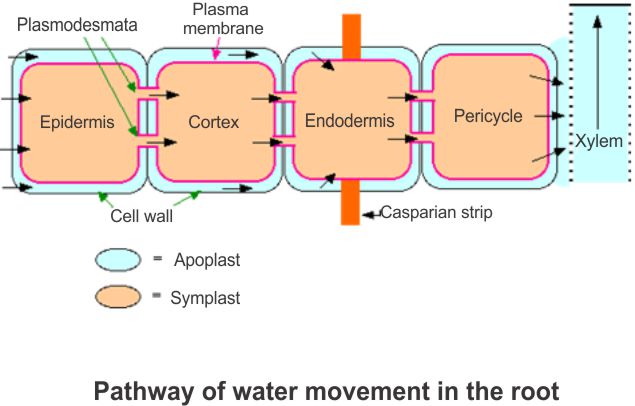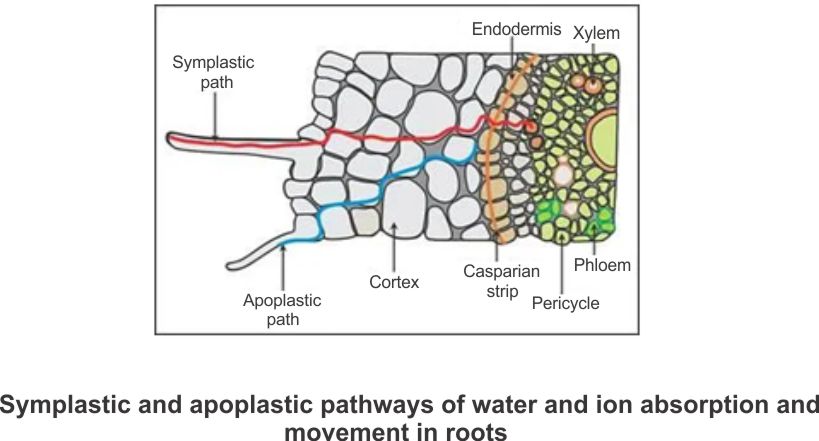Ascent of sap
- Ascent of sap refers to the upward movement of water through the plant, particularly from the roots to the aerial parts.
- Xylem, the specialized vascular tissue, is responsible for the upward transport of water, minerals, and some organic nitrogen and hormones.
- Vessels and tracheids within the xylem facilitate the bulk flow of water.
- Roots are the primary sites for water absorption in plants.
- Root hairs, present at the tips of roots, play a crucial role in water and mineral absorption.
- Root hairs, extensions of root epidermal cells, significantly increase the surface area for absorption.
- Water and minerals are absorbed by root hairs through diffusion.
- Water Movement in Roots:
- Apoplast Pathway: Water moves through the system of adjacent cell walls (apoplast), excluding the casparian strips of the endodermis. This pathway involves mass flow and relies on water's adhesive and cohesive properties.
- Symplast Pathway: Water travels through interconnected protoplasts via plasmodesmata, involving cytoplasmic strands. Movement is relatively slower, occurring down a potential gradient.

- Apoplastic movement is dominant due to loosely packed cortical cells.
- Casparian strip in the endodermis prevents water movement through the apoplast, directing it through the symplast.
- Water enters xylem vessels and tracheids, which are non-living conduits and part of the apoplast.

- Symbiotic association of fungus with the root system, enhancing water and mineral absorption through a vast fungal surface area. Mutualistic exchange involves minerals and water provided by the fungus and sugars by the plant roots.
- Some plants, like Pinus, depend on mycorrhizae for germination and establishment.
- Driving Forces for Ascent of Sap:
- Root Pressure: Pressure exerted by water entering the roots creates a force propelling water upwards.
- Capillarity: Adhesive and cohesive properties of water enable capillary action, aiding the rise of water through narrow tubes like xylem vessels.
- Transpiration Pull: Water loss through transpiration creates tension, resulting in a negative pressure that pulls water upwards.
Transpiration pull
- Water ascends through the xylem at impressive rates, reaching up to 15 meters per hour.
- Unlike animals with a circulatory system, plants lack a heart, yet they efficiently transport water.
- The mechanism behind water movement—whether it is 'pushed' or 'pulled'—has long intrigued researchers.
- Transpiration from leaves is identified as the primary force propelling water upwards.
- Cohesion-Tension-Transpiration Pull Model:
- The prevailing model for water transport, emphasizing the cohesive and tensional properties of water coupled with transpiration.
- The cohesion between water molecules and tension generated by transpiration collaboratively contribute to the pull.
